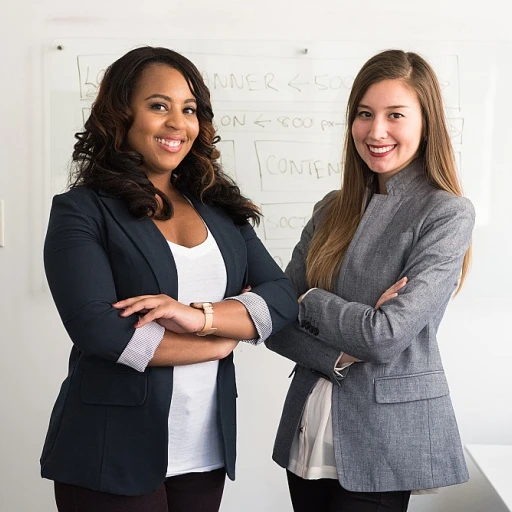
Understanding the Role of a Trainer
Embracing the Trainer's Role for Impactful Upskilling
The role of a trainer is critical in ensuring effective skill development and professional growth, both for individuals and within organizations. As a facilitator of learning, trainers must possess a diverse set of attributes and competencies that allow them to cater to the different learning needs of their participants. Understanding the qualities of a good trainer is essential in harnessing the potential of each training program. To begin with, a trainer must have a strong foundation in the relevant skills and knowledge they intend to impart to their learners. This involves not just mastery of technical or subject-specific skills but also the ability to apply these skills in practical settings. For example, a personal trainer should be well-versed in fitness techniques and be capable of adapting exercises to fit individual client needs. Moreover, a good trainer is also an effective communicator, able to engage learners and foster an interactive learning experience. This often involves tailoring their approach to match the diverse learning styles present in any training session. Having a deep understanding of learning development and customer service can significantly amplify training effectiveness by ensuring that learners feel supported and understood throughout the course. In the context of corporate training, trainers are expected to align their sessions with organizational goals. Trainers must fill identified skill gaps by focusing training efforts on areas that will enhance both individual and team performance. Whether it's enhancing technical skills or fostering professional development, the adaptability and willingness of a trainer to evolve with changing needs play a critical role in successful learning outcomes. The journey to becoming a proficient trainer involves continuous personal and professional growth. Engaging with ongoing education, such as ncca accredited courses or participating in proctored exams, can help in keeping trainers abreast of the latest industry standards and trends. For those looking to deepen their understanding of how trainers can influence upskilling, exploring effective upskilling can provide valuable insights. It emphasizes the importance of continuous learning and adaptability, fundamental aspects that every trainer should embrace to ensure the growth and development of their learners.Identifying Skill Gaps and Learning Needs
Recognizing Training Needs to Address Skill Gaps
Understanding the specific skills needed within an organization is foundational for any effective personal trainer, corporate trainer, or trainer model. In order to identify these skill gaps, it's essential for trainers to collaborate with team leaders, managers, and HR departments. This creates a comprehensive view of the current training landscape and learning needs. Firstly, investing time in conducting thorough needs assessments can be invaluable. These assessments help determine both individual and organizational skill deficiencies that hinder achieving strategic objectives. They often involve surveys, interviews, and benchmarking against industry standards to gauge the proficiency levels of team members. This process is akin to the experience gained through a certified personal training program or ncca accredited courses, ensuring trainers are well-prepped in their approach. An effective strategy also involves gathering feedback from employees themselves. Learners are the best resource to pinpoint what knowledge gaps affect their performance. Engaging them in open conversations helps trainers spot recurring themes and tailor future training sessions that are both relevant and impactful. In addition, utilizing data garnered from previous training courses can reveal insights. By analyzing which training programs have been successful or which skillsets are still under par, trainers can better understand how to fill those gaps with more precise and targeted training. Lastly, trainers should remain abreast of industry trends to ensure the skills being imparted keep pace with evolving demands. This might include online courses or proctored exams as a way to continuously upgrade knowledge and prepare learners for future challenges. As skill identification lays the groundwork for crafting effective training programs and sessions, it is pivotal for trainers to adopt a proactive and agile mindset, always ready to pivot based on the emerging needs. For a deeper dive into navigating upskilling within modern workplaces, exploring upskilling in modern workplaces could provide beneficial insights.Designing Engaging Training Programs
Crafting Engaging Experiences
Designing a training program that captivates learners is a crucial step for any effective trainer. In this phase, selecting the right blend of content and delivery methods is essential to engage learners and facilitate their skill development. When learners are highly engaged, they are more likely to retain new knowledge and apply it effectively in their personal or professional lives. To achieve this, trainers can leverage a multi-faceted approach that includes:- Interactive Sessions: Facilitate an active learning environment by incorporating discussions, group activities, and case studies. This encourages participation and allows learners to share their own experiences, enhancing the overall training session.
- Tailored Content: Develop materials that are relevant to the learners’ specific skill gaps and learning needs. Understanding these elements will help align training objectives with desired outcomes, ultimately making the program more effective.
- Use of Multimedia: Utilize videos, animations, and presentations to break the monotony and capture the attention of learners. Visuals can be a powerful tool in simplifying complex concepts, thereby improving comprehension.
- Reinforcement Techniques: Implement quizzes, feedback sessions, and practical exams to reinforce learning and ensure retention. Certified personal trainers, for instance, often use proctored exams to validate skill acquisition in their training courses.
- Flexible Learning Options: With the advent of online courses, providing flexible learning solutions such as self-paced modules can meet the diverse needs of different learners.
Utilizing Technology in Training
Embracing Technological Tools in Training
In today's fast-paced world, technology plays a pivotal role in transforming the way trainers deliver their programs. Incorporating technology into training sessions not only enhances the learning experience but also makes it more accessible and engaging for learners. Here are some ways to effectively utilize technology in training:
- Online Courses and E-Learning Platforms: These platforms offer flexibility and convenience, allowing learners to access training materials at their own pace. Trainers can leverage these tools to provide a wide range of courses, from basic skills to advanced professional development.
- Virtual Reality (VR) and Augmented Reality (AR): These immersive technologies can simulate real-world scenarios, providing learners with hands-on experience without the risks associated with physical training. This is particularly beneficial for personal trainers and corporate trainers looking to enhance their training skills.
- Webinars and Video Conferencing: Hosting live sessions through webinars or video conferencing tools can help trainers reach a broader audience. This method is effective for conducting interactive training sessions where learners can ask questions and receive immediate feedback.
- Learning Management Systems (LMS): An LMS can streamline the training process by organizing courses, tracking learner progress, and providing analytics to measure training effectiveness. This helps trainers identify areas where learners may need additional support.
- Mobile Learning: With the increasing use of smartphones, mobile learning apps offer a convenient way for learners to access training materials anytime, anywhere. This approach supports continuous improvement and lifelong learning.
By integrating these technological tools, trainers can create a more dynamic and effective training program that meets the diverse needs of their learners. As technology continues to evolve, staying updated with the latest trends will ensure that trainers remain at the forefront of the learning development field.
Measuring Training Effectiveness
Evaluating the Impact of Your Training Efforts
In the realm of upskilling, measuring the effectiveness of training programs is crucial. It ensures that both trainers and learners are benefitting from the program, and that time invested results in tangible improvements in skills. A good trainer will utilize various methods to evaluate the success of their training efforts. Here's how you can assess the effectiveness of your training sessions:- Pre- and Post-Training Assessments: This involves comparing the skills and knowledge of learners before and after the training. By conducting tests or surveys at both stages, trainers can identify areas of progress or the persistence of skill gaps.
- Feedback from Learners: Collect regular feedback from participants regarding their learning experiences. This can provide insights into what elements of the training program are working well and what may require adjustment to better meet learning needs.
- Performance Metrics: Track learners’ performance in practical applications post-training. This could include productivity improvements, application of new skills in real-life scenarios, or even customer service enhancements linked to training skills.
- Proctored Exams: For more structured and formal evaluations, utilize proctored exams to certify proficiency. It is especially useful for courses that aim for NCCA accreditation or similar standards.
- Continuous Monitoring: Measuring effectiveness isn't a one-time task. A commitment to lifelong learning and professional development demands continuous monitoring and refinement of training efforts over time.
Continuous Improvement and Lifelong Learning
Embracing a Commitment to Continuous Development
The journey of effective upskilling does not culminate with a single training session. Achieving mastery requires a dedication to continuous improvement, which can be a transformative experience for both trainers and learners. In today's dynamic work environment, skills that are relevant now may become obsolete in a short time, so it is crucial to adapt and evolve continuously. Good trainers understand that the learning process is ongoing. Their role extends beyond delivering a single course or training session. Instead, they act as lifelong learning facilitators, aiding learners in tracking their progress and identifying new areas for growth. Incorporating a culture of continuous learning in training programs is essential. Here are some strategies to foster such an environment:- Encourage Reflective Practices: After each training session, encourage learners to reflect on what they have achieved and what can be improved. This helps solidify knowledge and highlight areas that need further development.
- Facilitate Access to Resources: Provide access to a wealth of learning development resources such as online courses, workshops, or professional development seminars. This supports continuous skill enhancement beyond formal training sessions.
- Promote Networking and Collaboration: Encourage learners to join communities of practice, where they can share insights, experiences, and challenges. Networking with peers can provide new perspectives and fill knowledge gaps.
- Utilize Technology for Ongoing Learning: Incorporate digital platforms and tools that offer learners the flexibility to learn at their own pace. Tools like learning management systems provide valuable analytics on learners' progress and areas where they excel or need help.












